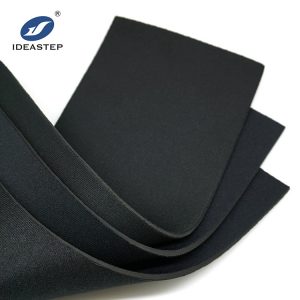
Neoprene is a synthetic rubber that was originally developed in the 1930s by the DuPont company. It is made from a polymer called chloroprene and has a number of unique properties that make it ideal for use in orthotics.
One of the key benefits of neoprene is its flexibility and durability. It can be easily molded into different shapes and sizes to fit the specific needs of each patient. This allows podiatrists and other healthcare professionals to create custom-fit orthotics that provide maximum comfort and support for the feet.
In addition to its flexibility, neoprene is also known for its excellent cushioning properties. When used in orthotics, it can help absorb shock and reduce pressure on the feet, which can alleviate pain and discomfort caused by conditions such as plantar fasciitis or heel spurs.
Neoprene is also resistant to water and chemicals, which makes it an ideal choice for use in footwear that may be exposed to these elements. This can be particularly beneficial for athletes or people who work in environments where their feet are likely to get wet or come into contact with harsh chemicals.
Finally, neoprene has thermal insulation properties, which means it can help keep the feet warm in cold weather. This can be especially important for people with poor circulation or those who live in colder climates.
Overall, neoprene is a versatile and reliable material for orthotics that offers a range of benefits for patients. Its flexibility, durability, cushioning, water resistance, chemical resistance, and thermal insulation properties all make it an excellent choice for use in orthotics.
